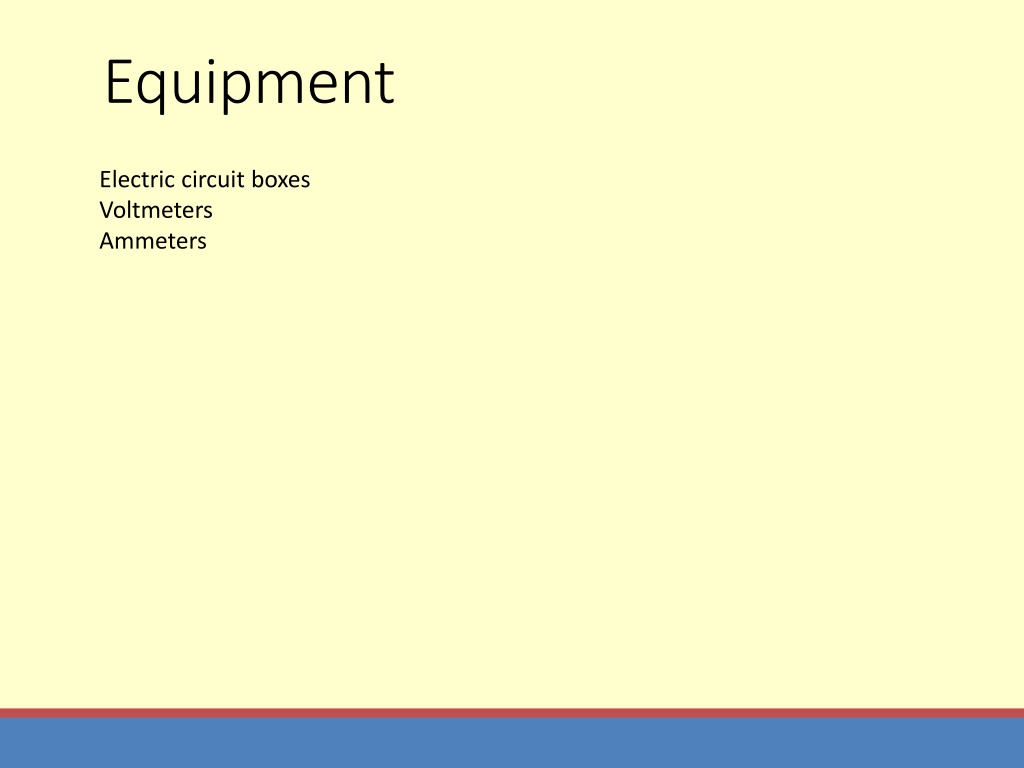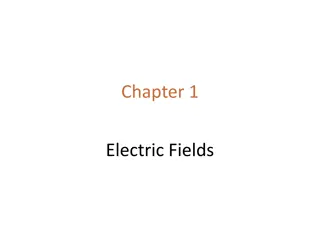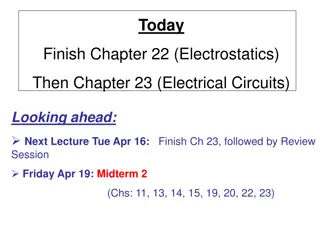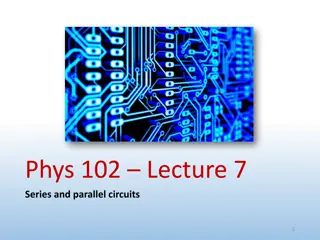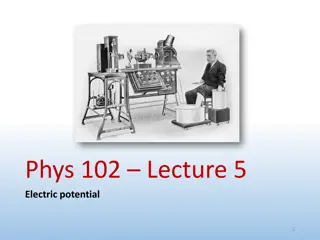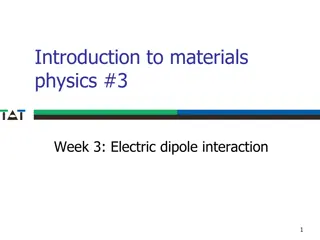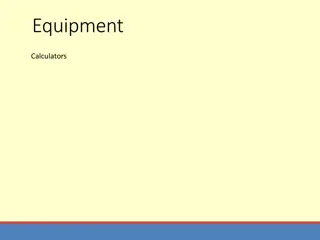Understanding Potential Difference in Electric Circuits
Explore the concept of potential difference in electric circuits, including measuring with voltmeters, calculating potential difference, and understanding the energy transfer in components. Learn about voltage symbols, placement of instruments like voltmeters and ammeters, and how multiple lamps affect energy distribution in a circuit. Practice with questions to deepen your understanding.
Download Presentation

Please find below an Image/Link to download the presentation.
The content on the website is provided AS IS for your information and personal use only. It may not be sold, licensed, or shared on other websites without obtaining consent from the author. Download presentation by click this link. If you encounter any issues during the download, it is possible that the publisher has removed the file from their server.
E N D
Presentation Transcript
Equipment Electric circuit boxes Voltmeters Ammeters
Potential Difference L.A.: Measure potential difference in a circuit. Calculate the potential difference 4 6 Rearrange equations for resistance and potential difference. 8
Starter Starter Spelling test! Circuit Ammeter Component Conductor Resistance Coulomb Voltage
BIGGER PICTURE Potential difference and resistance Component characteristics Current and charge Series Circuits TOPIC Electric circuits Parallel Circuits
Potential Difference (V) Potential difference is the energy transferred or work done by each coulomb of charge as it passes through a component. Cells (or batteries) give the electrons energy (provide the push). When the electrons pass through a component they transfer some of the energy. E.g. in a lamp the energy transfer to Heat and light
Key info Key info Potential Difference (Also known as voltage) Symbol: V Measured in: Volts SI Unit: V E.G V = 20V
Build it How is the placement of the voltmeter different from how you put the ammeter in last lesson? 1 2
All the joules given by the battery to the electrons are exactly used up by the time the electrons get back to the battery! If there is more than one lamp what would have to happen?
Potential difference = Energy / Charge (in V) (in J) (in C) or V = E / Q E Q V
Question 1 Question 1 A battery transfers 30J for every coulomb of charge that passes through the battery. What is the potential difference of the battery?
Question 2 Question 2 A battery has a voltage rating of 40V. How much energy is transferred by the battery if 20C of charge pass through the battery?
Task Task 1. What is the voltage of a battery if it transfers 40J of energy for every 10C that pass through it? 2. A builder requires a 400V battery to power his pneumatic drill. He is told that a battery transfers 1000J for every 3C of charge that pass through it. Will this battery be good enough? Why? 3. How much energy would the battery in the question above need to transfer for every 3C to have a voltage of 400V? 4. Battery A has a rating of 300V. Battery B has a rating of 500V. What is the difference in the amount of work done by the two batteries if 20C of charge pass through both batteries?
Plenary - Conservation of Energy Question: You can get different currents with the same battery, depending on what you connect to it. What difference will the size of the current make to the lifetime of the battery? (how long the battery will run for) Why?
